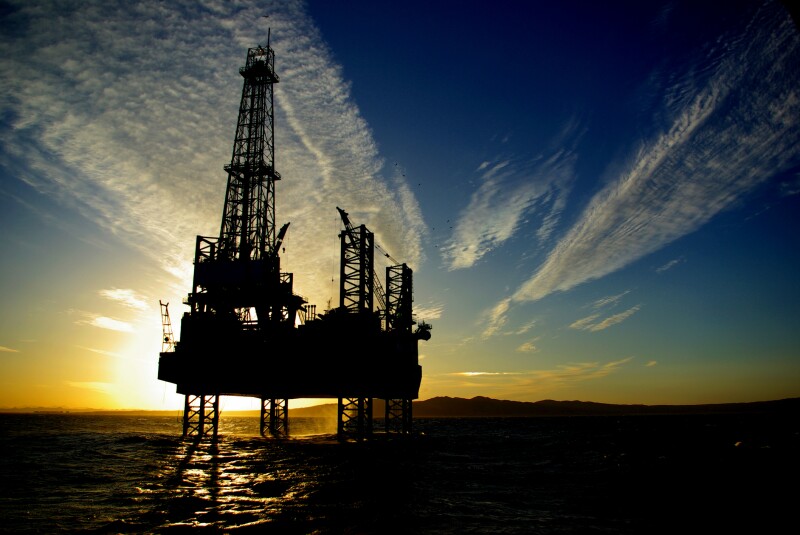After concessions fist awarded in 2019 failed to yield discoveries, Chevron and other upstream oil and gas majors have exited exploration concessions in the Red Sea to redirect their Egyptian investment portfolios to prospects of greater commercial value.
Chevron confirmed in April that it had relinquished its 45% operated stake in Red Sea Block 1, located in the northern Red Sea, with Reuters quoting company spokesman Sally Jones that Chevron “remains committed to working together with the government of Egypt and our partners to support the growth of Egypt's energy sector through our exploration programs in the Mediterranean.”
Chevron partners with Australia's Woodside Energy and Egypt’s Thawa in Block 1.
In March, the Middle East Economic Survey (MEES) reported that Shell was the first to exit the Red Sea together with its partners in Block 3 and Block 4, in which Shell holds 43% and 21% operator interests, respectively. But Shell has yet to formally confirm the report.
Shell’s partners in Block 3 include Australia’s Woodside (30%) and QatarEnergy (17%). Block 4 partners include UAE state-owned Mubadala (27%), Woodside (25%), and QatarEnergy (17%).
As part of an effort to grow its gas production and transform itself into an energy hub and LNG exporter for the Eastern Mediterranean (EastMed), Egypt had awarded oil and gas exploration concessions in the Red Sea in 2019 to Chevron, Shell, and Abu Dhabi sovereign wealth fund Mubadala Investment Company in a first-time international tender.
Egypt’s domestic gas production declined from 7 Bcf/D in 2022 to approximately 4.5 Bcf/D currently, according to analytics provider Wood MacKenzie. A lack of investment in exploration has driven the decline when production rates fell dramatically as the Zohr field and West Nile fields that matured during this period.
As for the awarding of concessions in 2019 in the Red Sea:
Egypt’s petroleum ministry spokesperson Moataz Atef told reporters at a news conference in April that “companies have spent millions on their concessions (in the Red Sea) within the agreed time frames” with one company investing $34 million in exploration that was contracted to cost $10 million “but found no results.”
Atef did not name the other companies that he said had relinquished their Red Sea blocks, identifying them only as several multinational companies that were redirecting their investments to other areas in Egypt, particularly in the Mediterranean.
Life Is Better in the Mediterranean
Egypt’s petroleum ministry said both Chevron and Shell have applied for new concessions in the Mediterranean Sea, reaffirming their commitment to Egypt's oil and gas sector, without giving further details.
Chevron spokesperson Jones said it had interest in three other exploration blocks in Egypt, including two as an operator in the EastMed.
Meanwhile, multinationals and supermajors are structuring joint ventures to share risk in gas exploration in the EastMed. The most recent example is Arcius Energy, the ADNOC and BP joint venture focused on gas in Egypt’s Shorouk, North Damietta and North El Tabya, Bellatrix-Seti East, and North El Fayrouzn concessions.
Shorouk is home to the EastMed’s largest gas field, Eni operated Zohr, while the BP-operated Atoll field is part of North Damietta.
Wood Mackenzie published an analysis in February suggesting that Arcius may also be eyeing opportunities offshore Israel and Cyprus to develop synergies with Egypt and its underutilized liquefied natural gas (LNG) facilities.
The Carlyle Group’s acquisition of Energean’s Egyptian assets is another example of how the local market could leverage mergers and acquisitions for added investment.
“We also expect Harbour Energy to keep its assets in Egypt, which ranks as the 5th-biggest country by NPV (net present value) in a portfolio swelled by the Wintershall Dea merger,” Wood Mackenzie analysts wrote.
“The region is important to almost all the majors and we estimate their remaining East Med NPV at $19 billion. With the East Med set for significant growth through to the late 2020s, the majors are its natural partners, attracted by stable cash flows from advantaged, low-emissions gas and potential access to European gas markets.”
